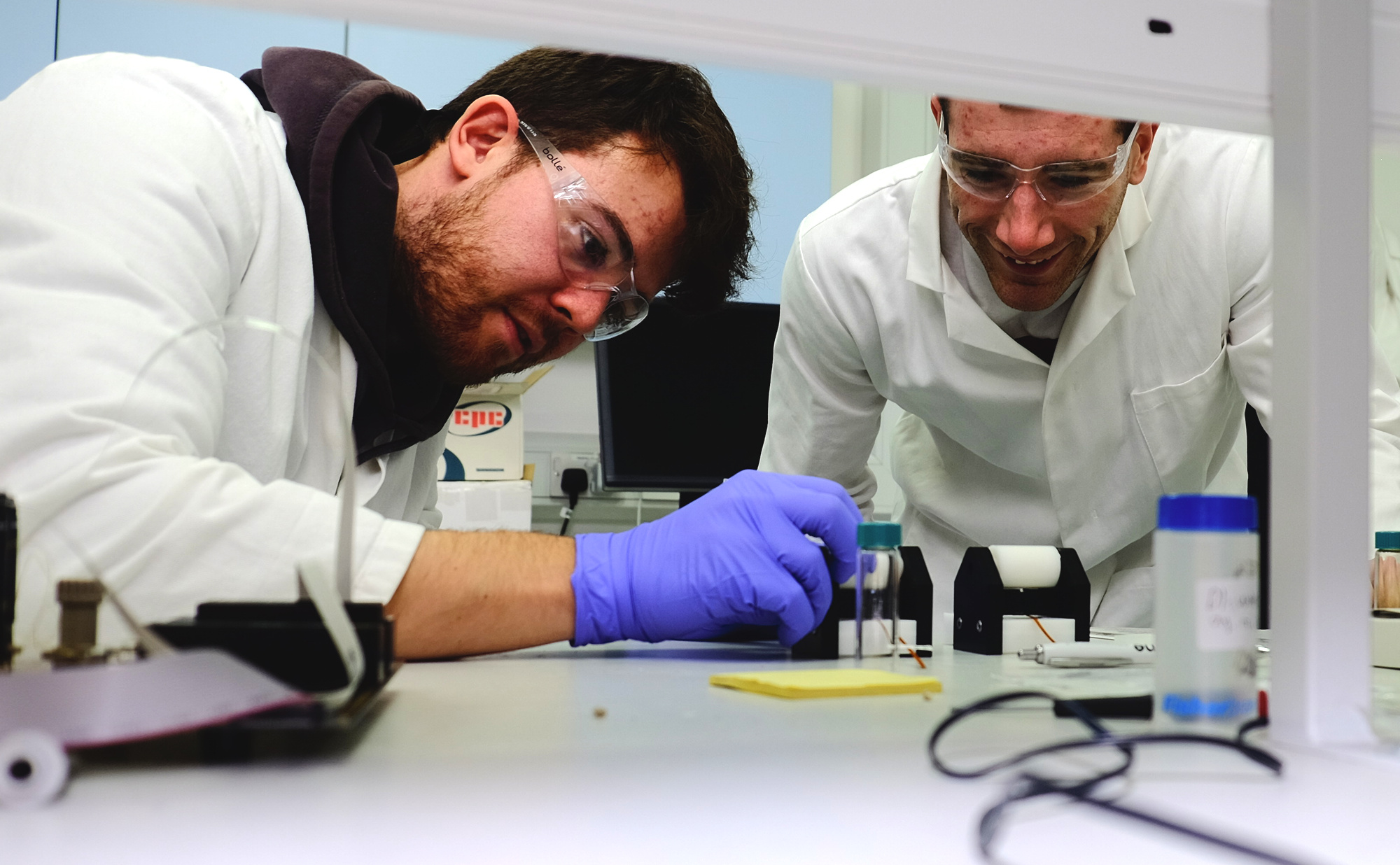Nuclear magnetic resonance (NMR) spectroscopy is one of the most powerful and versatile tools in the hand of the chemist, biologist, and materials engineer. It relies on the precession of the magnetic moments associated with atomic nuclei in a string magnetic field. The precession frequency of each nucleus is poportional to the magnetic field, but it is also affected somewhat by the details of the electron structure that surrounds the nucleus. These differences are small,but can readily be measured with high-quality instruments. Conversely, the spin precession of the nuclei has a negligible effect on the electronic structure.
Combining NMR with microfluidic Lab-On-A-Chip devices would have obvious benefits, but presents significant challenges
Therefore, the nuclei come close to being ideal spies: they experience and report everything that goes on around them, without being “seen”.

While the most common NMR instruments work with samples ranging from a few cm to a couple meters in size (think of clinical magnetic resonance imaging scanners!), it is an obvious idea to try and combine NMR spectroscopy with modern miniaturised lab-on-a-chip devices. These are micro fabricated systems, not unlike electronic microdevices, which integrate a complex chemical or biological experiment in a small, usually expendable platform. For example, microfluidic devices can provide cells with a controlled growth environment that mimics natural tissue. This allows us to cultivate highly specialised cell types, for example liver cells, which are difficult to grow in bulk cultures. Integration of NMR spectroscopy into such a system would enable us to follow the metabolism of these cells in vivo and in real time without perturbing or destroying them.
It is therefore no wonder that NMR spectroscopy has found widespread applications in chemistry, physics, biology, medicine, and materials science. It is the source of a large part of our current knowledge on the structure and dynamics of matter at the molecular scale.
Microfluidic NMR spectroscopy faces a range of technical and spectroscopic problems which must be overcome in order to make the approach useful in practice. This is the main objective and field of activity of our research group.
Some of the difficulties are associated with the small sample volumes that are typically used in microfluidic systems. This leads to correspondingly weak signals, which are difficult to pick up. The development of ultra-sensitive detectors and amplifiers is therefore an important part of our work.
Another, maybe less obvious difficulty lies in the control of the magnetic field itself. Since the differences in the precession frequencies of different chemical species are very small, the applied magnetic field must be extremely homogeneous over the sample volume. In a microfluidic chip, which can contain a complex network of channels, chambers, and valves, this can be very difficult to achieve. The materials which can conveniently be used in microfabrication are not necessarily ideal from an NMR point of view. Some of them are partially magnetic, while others contain large amounts of the nuclei of interest in NMR (hydrogen!) and therefore cause large background signals.
For these reasons, the integration of high-resolution NMR spectroscopy into lab-on-chip devices is currently an active field of research, with a number of groups making contributions worldwide. Progress has been particularly rapid in the past five years or so, and the first real-world applications are emerging.